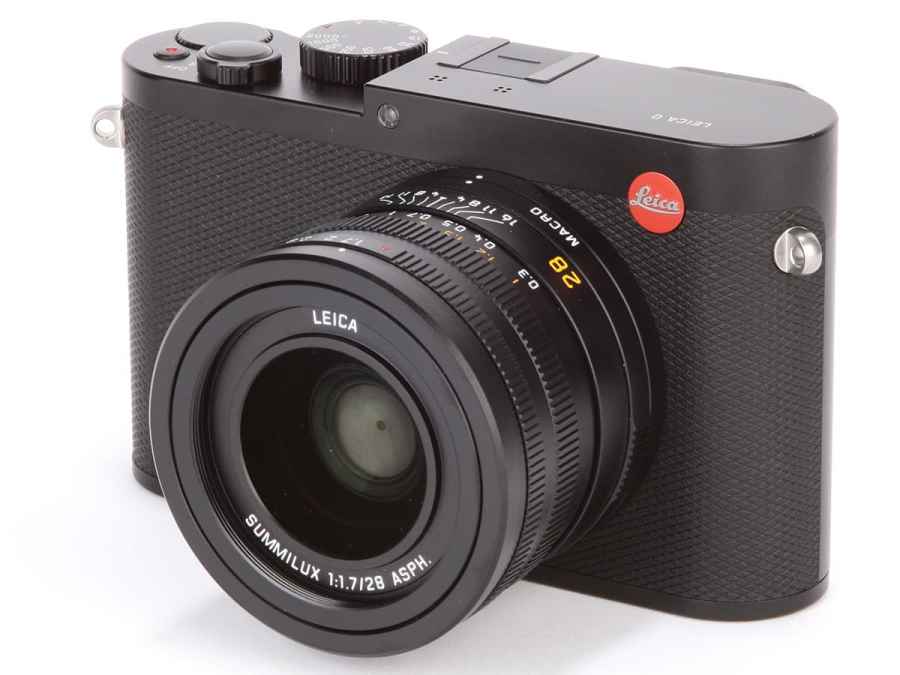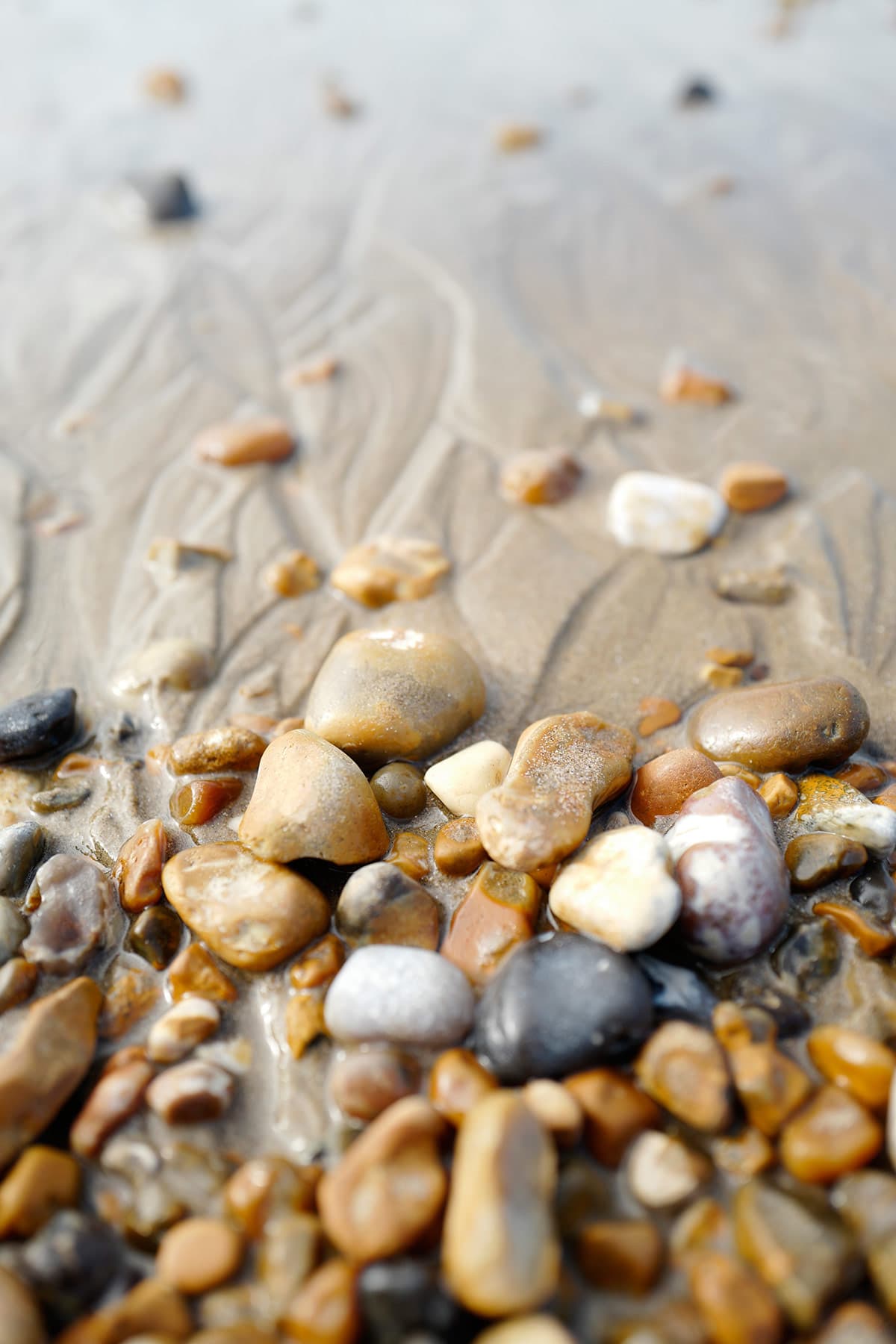At a glance
- 24.2MP, full-frame CMOS sensor
- ISO 100-50,000
- Leica Summilux-M 28mm f/1.7 Asph lens
- 10fps continuous shooting
- 3.68-million-dot EVF
- 3in, 1.04-million-dot touchscreen
- Price £2,900
Ever since digital photography went mainstream, Leica has been stuck between a rock and a hard place. Traditionalists have wanted Leica to stick as close to its heritage as possible, while others have seen the company as something of a relic, making expensive cameras that offer little in the way of innovation. As you would expect, the reality is somewhere between the two.
Leica’s M-mount rangefinder cameras are beautifully manufactured, but they come at a premium price and offer little in terms of image quality that you can’t find elsewhere for less money. The company’s compact cameras are rebadged Panasonic models, with a red-dot logo and the Leica levy added to the price. As for its own fixed-lens compact cameras, such as the X series, Leica has never managed to capture the essence of what it is to use a Leica rangefinder camera – until now.
The Leica Q is a game-changer for Leica. The company’s X-series cameras, with their 16.2-million-pixel, APS-C-sized sensors and lack of viewfinder, failed to capture the imagination. The cameras didn’t offer the same experience as the Leica M rangefinder and they came at a time of fierce competition from the likes of the Fujifilm FinePix X100. However, the new Leica Q is a different beast. For this new line of cameras, Leica seems focused on the experience of using the camera. If that experience means breaking with some users’ preconceived ideas of what Leica cameras are about, then so be it.

Does the Leica Q signify a new era for Leica?
Leica Q (Typ 116) Review – Features
So just what has Leica done to make the Q work so well? Let’s start with the sensor. The Q features a 24.2-million-pixel, full-frame CMOS sensor. To date, the only compact camera that can rival this sensor is the Sony Cyber-shot DSC-RX1 (and RX1R). This means that the Leica Q stands out in the already crowded premium compact camera market.
Next is something that is not typical of Leica – a 3in, 1.04-million-dot touchscreen. The Leica T (Typ 701) compact system camera also uses a touchscreen, but the Leica T targets a different type of photographer. Touchscreens are becoming almost standard, so it is perhaps not such a surprise to see one on a classically styled Leica camera. However, the final key feature is a surprise – a 3.68-million-dot electronic viewfinder that is built into the camera.

Both the touchscreen and the EVF are welcome additions to the Leica compact
With such a high resolution, the electronic viewfinder in the Leica Q is the highest in any commercially available camera. There are 5-million-dot EVFs in development, but currently Leica can claim a first. For the German company it is a real feather in its cap to beat major electronics companies like Sony and Panasonic to this.
Leica rangefinders obviously use an optical rangefinder mechanism, and in the past Leica’s X-series have had optional electronic viewfinders. Incorporating an electronic viewfinder in the Leica Q is sure to raise eyebrows, with many people asking if the EVF is a sign of Leica forsaking its roots. With a touchscreen as well, the Leica Q doesn’t seem much like the Leica cameras we know at all.
Regarding the more conventional features of the new camera, the Leica Q has a sensitivity of ISO 100-50,000. Shutter speeds range from 30secs-1/2000sec and are available via the mechanical shutter. In another concession to modernity, the Q also has an electronic shutter. This automatically kicks in at 1/2500sec and allows shutter speeds of up to 1/16,000sec.
Fixed to the front of the Q is a Leica Summilux-M 28mm f/1.7 Asph lens. The aperture is controlled via an analogue aperture ring on the front of the lens, and a manual focus ring sits just behind this. There is also a ring that switches between the standard and macro mode of the lens. This clever piece of engineering shifts the entire inner lens forward, and even reveals a new focus-distance chart. The result is that the lens switches its shortest focus distance from 30cm to 17cm.
The 28mm lens is also optically stabilised. Looking into the lens, you can see the stabilisation element moving to counteract any camera shake. It is an impressive and intriguing thing to see.
A feature on the Q that was previously found on the Leica T is built-in Wi-Fi. This is used with a dedicated Leica Q app that is available for both Android and iOS via their respective app stores.
Elsewhere there is quite a comprehensive, if somewhat standard set of features. The camera has the standard set of exposure and metering modes, as well as a set of scene modes. The Q can shoot continuously for up to 10fps, as well as being able to capture video at a full HD 1920×1080 60p or 30p resolution.
Build and handling
If you have ever used a Leica rangefinder camera, you will pick up the Leica Q and feel something instantly familiar. Its aluminium top-plate and magnesium-alloy body give the camera a reassuring weight. The chunky body and rounded size mimic the look and feel of a Leica M-series camera.
As with all Leica cameras, the Q is quite understated. It has a simple matt-black finish on the body, with a textured front to aid the grip. The famous red-dot logo adorns the right of the camera’s body, while the top-plate is flat with the sunken hotshoe flush with the body. A cutaway to the left of the camera is home to a shutter button and shutter-speed dial, both of which are also flush with the body. A control dial and video-record button sit within this cutaway half towards the top of the camera.
The rear of the camera also has a simple layout. Five small buttons sit to the left of the screen, with a small directional control on the right. The emphasis of the Leica Q has obviously been on simplicity and design, but it is important that any design is functional – after all, a camera is a tool to use rather than look at.
You can often judge what you think of a camera by whether you forget that you are reviewing it and just enjoy using it. This is what happened when I was using the Leica Q. With the sensitivity set, the metering on evaluative, the autofocus turned on and the camera in aperture priority mode, I just started shooting.
After a few hours something interesting happened. I noticed that I had gradually turned off most of the automatic features and was focusing and exposing all my shots manually. This is something that I tend not to do. I do it as part of the testing process, to see what the camera is like in these modes, but with the Leica Q it was different – it was instinctive.

The top plate controls of the Leica Q
The explanation for this sudden switch to manual is all to do with the handling. It just feels right to operate the Leica Q in this way, and that is down to the sum of its the parts. You expect the camera body to be straightforward and refined, but it is the features you wouldn’t expect from Leica that make the Q shine.
This may seem like blasphemy to some, but it is the EVF that makes the Leica Q. With such a high resolution, the EVF is the closest thing to using an optical viewfinder that I have used. When manually focusing the lens, the slightest turn of the focus ring presents a magnified view in the electronic viewfinder window, or on the rear LCD screen. As the resolution of the EVF is so high, you can see when the tiniest of details are in focus. What’s more, the standard Leica focusing lever on the underside of the lens makes manually focusing easy. This combination makes the Leica Q one of the best cameras to manually focus that I have used in a long time.
While the key exposure features are accessed on the body of the camera, you do need to go into the menu system of the Leica Q to change some of the more advanced settings. The layout of the menu is straightforward, with all the menu settings placed in a long list. It may not be the most advanced set of menu settings, but in keeping with the principles of Leica design it contains enough features to tweak how the camera operates but isn’t excessive.
Comparisons are often made between Leica and the electronics giant Apple. This is somewhat fitting, as the best way to describe the way the Leica Q handles is that ‘it just works’ – a phrase that is often said at the launch of Apple products.
Autofocus
To see more shots taken with the Leica Q see our sample image gallery
While it’s fair to say that Leica cameras aren’t especially known for their fast autofocus speeds, the Leica Q comes as something of a surprise. The camera uses contrast-detection autofocus. Just a few years ago this was vastly inferior to the much faster phase-detection type of autofocus, but things have changed and now contrast detection can rival phase detection in most circumstances.
This is exactly the case with the Leica Q. It focuses extremely quickly, snapping into focus in any of its multi-area, centre or selective single-point modes. Given the fixed 28mm focal-length lens, which means the Leica Q will largely be used for landscape and reportage-style images, the AF speed is more than fast enough.
However, the AF speed tells just part of the story. Once again, it is a feature that you wouldn’t associate with Leica that makes the AF stand out –the touchscreen. Most photographers aren’t especially enamoured by touchscreen technology as a means of operating their cameras, but the one area where touchscreens really come to the fore is when selecting the autofocus area.
With the touchscreen turned on and the AF mode activated, a simple touch of the Leica Q’s screen selects the points of focus and the lens quickly snaps to that area. It makes changing the AF points almost effortless. Once again, this reflects on the way that the camera handles and operates. Every feature and function seems to work harmoniously with each other, making simple tasks just that – simple.
Performance
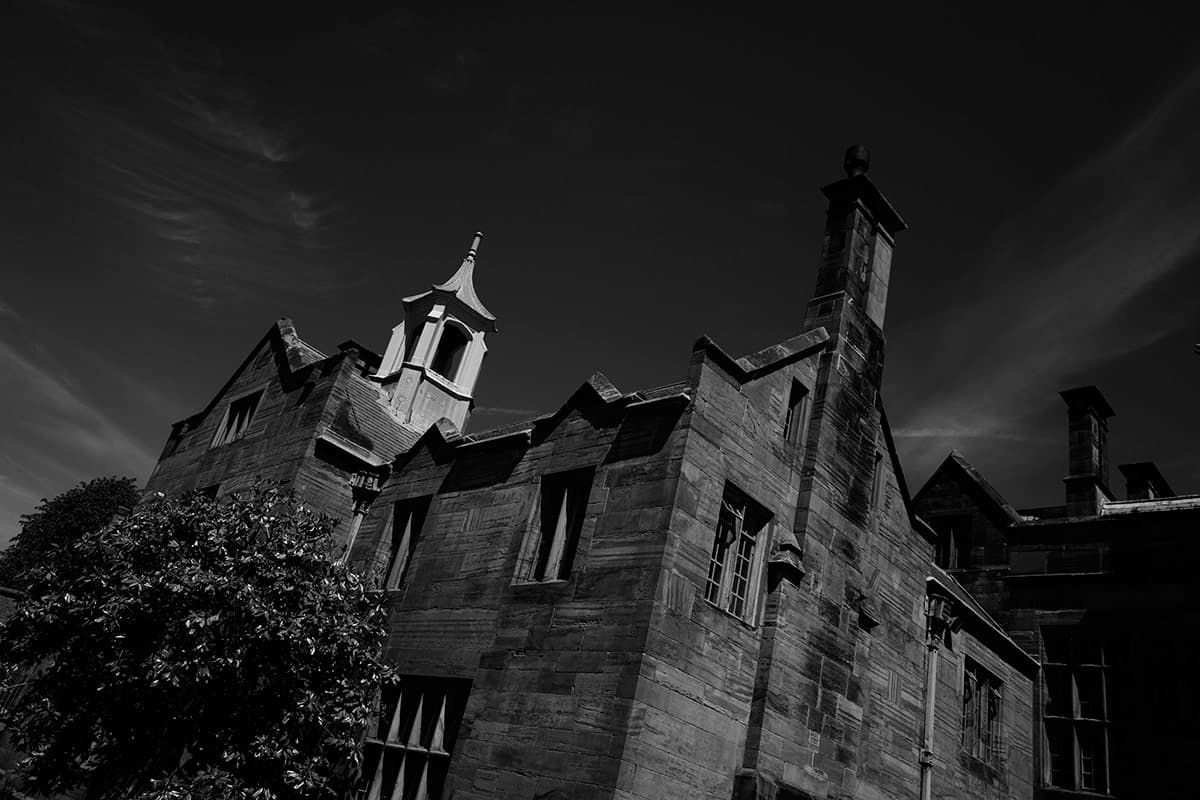
Leica Q sample image 2
1/320 sec @ f/11, -1EV, ISO 100
Shot using in-camera monochrome mode with contrast boosted
You can probably already tell that I really enjoyed my time using the Leica Q, and that is all down to the way the camera performed. As I said previously, it isn’t so much that there are one or two standout features of the camera, but rather the way that the camera operates as a sum of all its parts is what makes it a real pleasure to use.
We’ve established that the autofocus and handling of the camera, as well as the EVF and rear screen, are excellent, but what about the features that affect the image quality of the camera? The evaluative metering performs well, although I did find that it had a slight tendency towards retaining highlight detail. This produced some images that many photographers would think slightly underexposed. Obviously, this is easily rectified, as plenty of detail that can be recovered from the shadow areas without introducing much in the way of luminance or colour noise. Spot and centreweighted metering modes are also available and these perform exactly as you would expect them to.
There are a variety of different colour modes available in the camera, although the one that really caught my eye was the monochrome setting. With this setting customised to increase the contrast, I found that the black & white images looked as though they had been taken with a red filter, with blue skies looking particularly dark and moody. Black & white images taken in this mode looked fantastic.
Images can be saved as either JPEG or DNG raw files. Generally, the JPEG images produced in-camera look good, although they do benefit from a slight increase in sharpening. While the DNG raw files can be opened in virtually all raw image-editing software, a full copy of the latest version of Adobe Photoshop Lightroom is included with the camera. When editing the raw files I found that there was a lots of recoverable detail in both highlight and shadow areas, and the files responded well to some fairly harsh lifting of the shadow areas.
See more images from the Leica Q in our sample gallery
Leica Summilux-M 28mm f/1.7 Asph lens
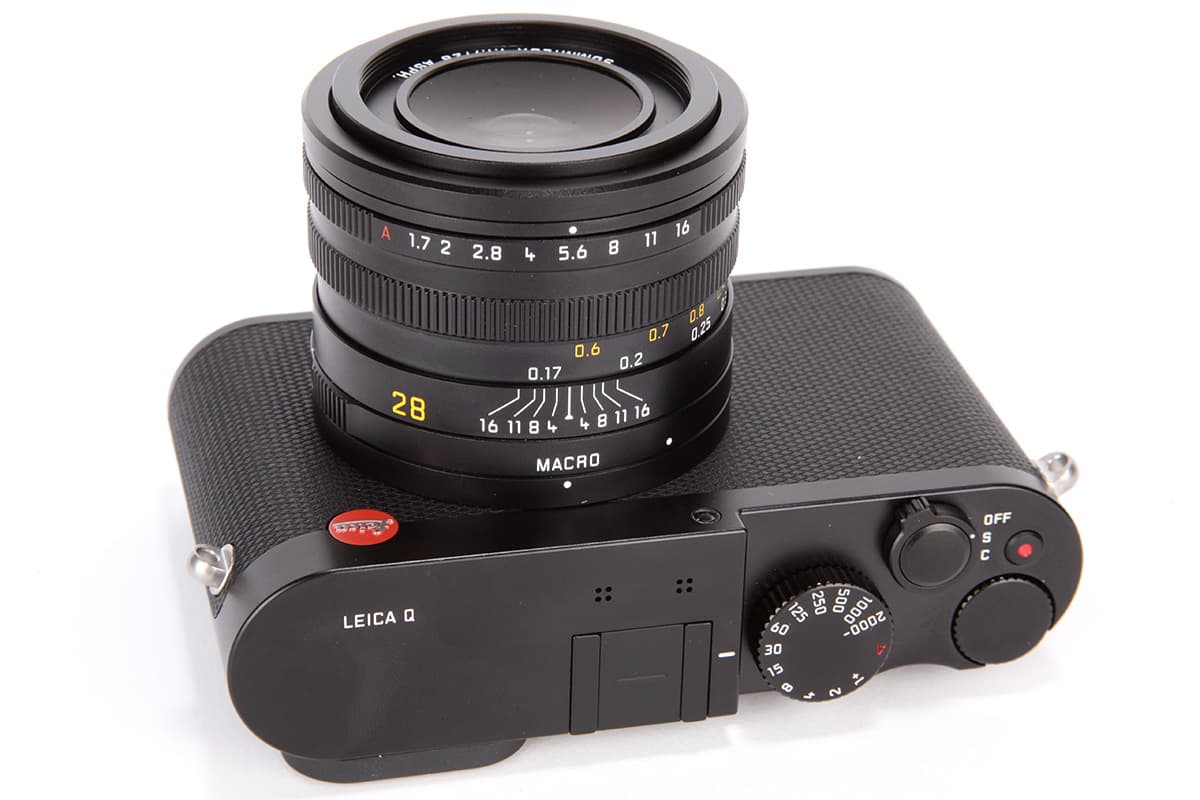 When a lens is fixed it is important that it is a good match for the camera, and although some may question the decision to opt for 28mm rather than 35mm, I found that I was able to get a variety of images without feeling too compromised.
When a lens is fixed it is important that it is a good match for the camera, and although some may question the decision to opt for 28mm rather than 35mm, I found that I was able to get a variety of images without feeling too compromised.
The lens is constructed of 11 elements in nine groups, with three of the elements being aspherical. As you would expect from Leica, the lens feels good in the hand, with a reassuringly level of torque on both the aperture and manual-focus rings.
The 28mm f/1.7 lens is extremely sharp, especially when shooting between f/5.6 and f/8. Sharpness starts to drop at f/11, with diffraction becoming obvious at the smallest aperture of f/16. When shooting wide open, images are still acceptably sharp and out-of-focus areas are smoothly rendered. There was some slight curvilinear distortion, although this is largely corrected in both JPEG and raw images so is not an issue.
Image Quality
The Leica Q uses a 24.2-million-pixel full frame sensor, which is most likely a Sony model. Leica has already stated that it’s not the same sensor as that used in the Leica M (which has a bespoke sensor). As can be seen in the tests here, the Leica Q performs just as you would expect it to. It handles noise well until fairly high sensitivities, and the dynamic range is good, without setting any records. As for the resolution, the camera again performs about on par for a sensor of this specification.
Overall, the Leica Q produces good images throughout ISO 100-6,400, which is the working range most photographers will operate in regularly. However, as discussed elsewhere in this test, while the sensor may be seemingly standard, the Leica Q’s real strength lies in its handling, EVF and autofocus.
Resolution
The Leica Q resolves around 3,600l/ph at ISO 100 in our resolution tests. This level of detail is about what you would expect from a camera with a 24-million-pixel sensor. As can be seen in the resolution chart swatches above, there is some coloured moiré patterning visible that softens detail, but generally the result is good. As the sensitivity rises, the resolution holds up well, still reaching 3,200l/ph at ISO 3,200. Although noise is visible, even ISO 50,000 reaches a respectable 2,600l/ph.
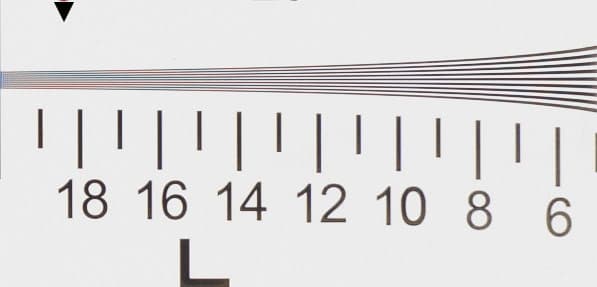
Leica Q resolution – ISO 100
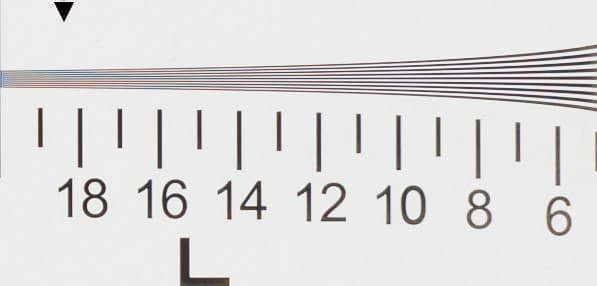
Leica Q resolution – ISO 200
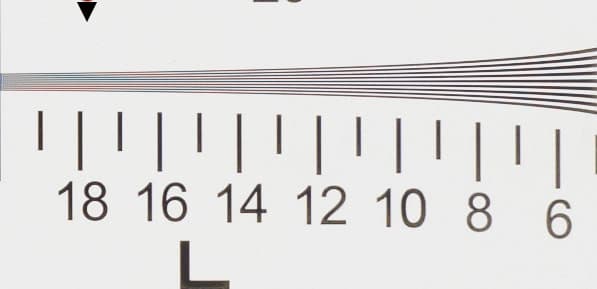
Leica Q resolution – ISO 400
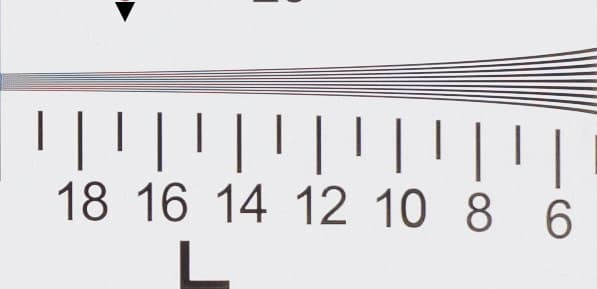
Leica Q resolution – ISO 800

Leica Q resolution – ISO 1600
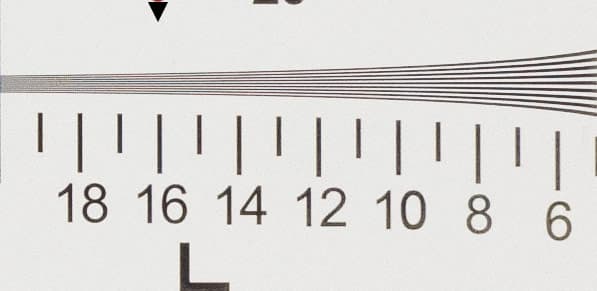
Leica Q resolution – ISO 3200

Leica Q resolution – ISO 6400
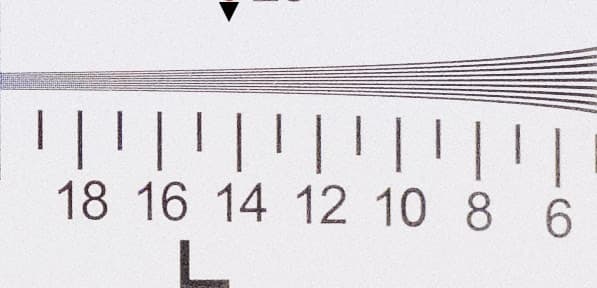
Leica Q resolution – ISO 12,500

Leica Q resolution – ISO 25,000
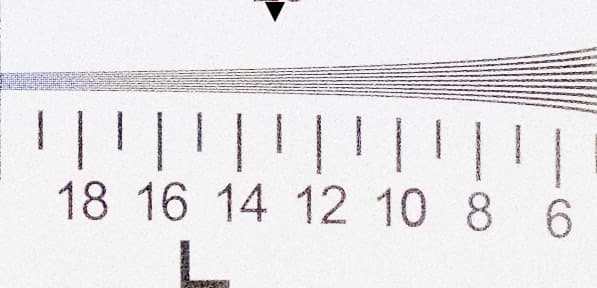
Leica Q resolution – ISO 50,000
Dynamic Range
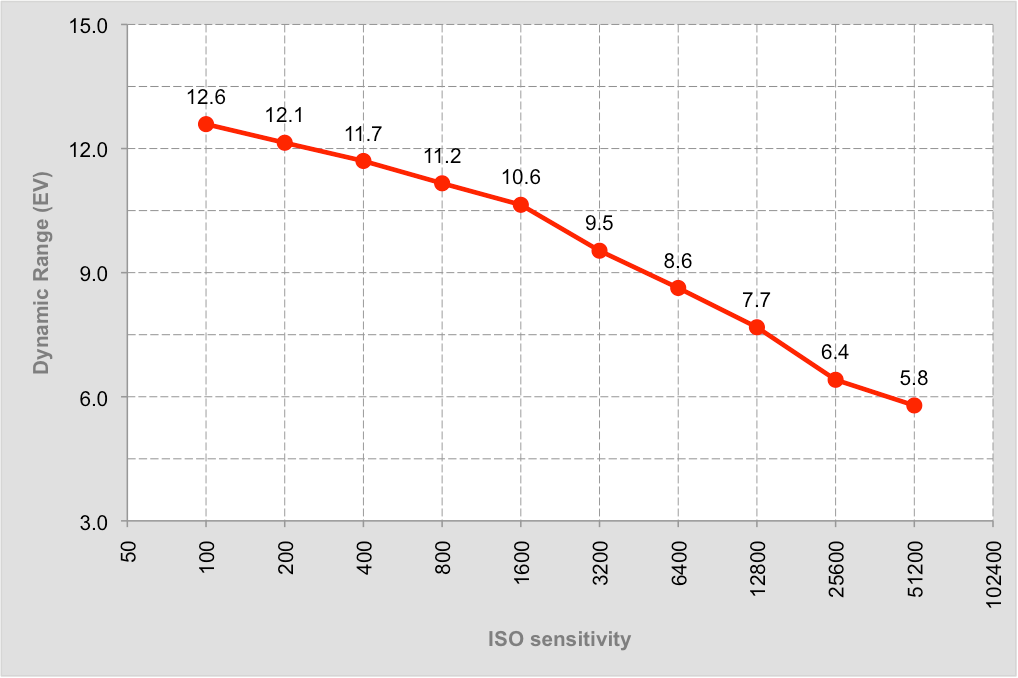
Leica Q dynamic range
In our Applied Imaging tests, the Leica Q reaches a respectable dynamic range of 12.6EV at ISO 100. Numbers aside, I found that even up to ISO 400 there was plenty of detail that was recoverable in the shadow areas of raw images. As the graph shows, the Leica Q has a fairly linear dynamic range pattern and falls steadily as the sensitivity increases. By the top two sensitivity settings of ISO 25,600 and 50,000, the dynamic range is 6.4 and 5.8EV with far less detail in highlight and shadows.
ISO Sensitivity and Noise
As with the dynamic range and resolution chart tests, the noise produced by the Leica Q is about what you would expect from a camera with a 24.2-million-pixel full-frame sensor.
Images at low sensitivities are virtually noise free, and at ISO 800 even the shadow areas of images show virtually no noise. It’s not until around ISO 6,400 that noise starts to become obtrusive, and as usual, the highest two sensitivity settings do suffer from luminance noise and should generally be used only as a last resort.
However, throughout the sensitivity range, the colour noise in JPEG images is very well controlled. This is great news for JPEG shooters who can comfortably shoot right up to ISO 6,400. Those shooting DNG raw images obviously have a little more flexibility, but we’d recommend using sensitivities below ISO 6,400 to get the best out of the Leica Q.
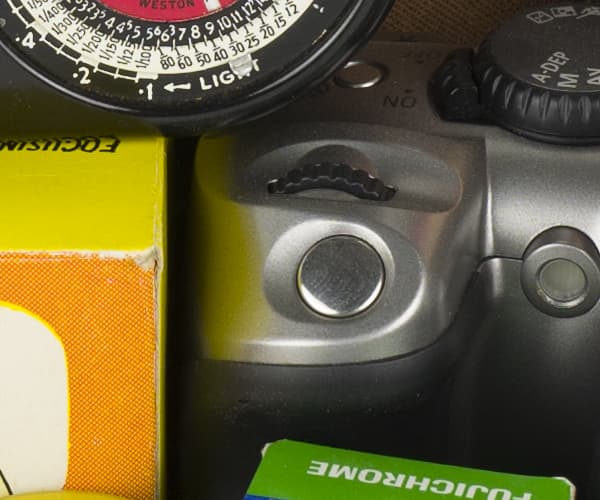
Leica Q noise – ISO 100

Leica Q noise – ISO 200
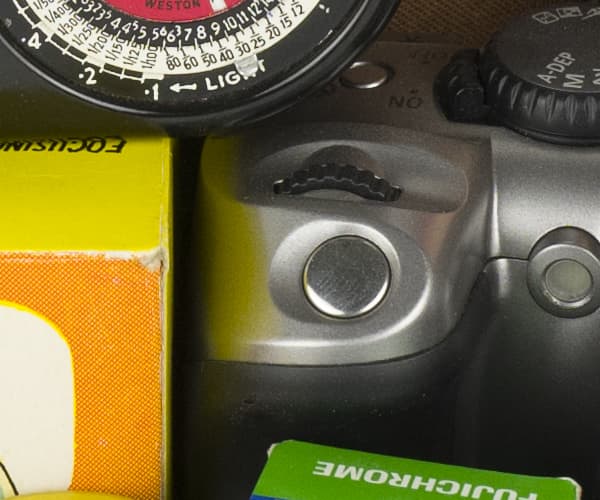
Leica Q noise – ISO 400
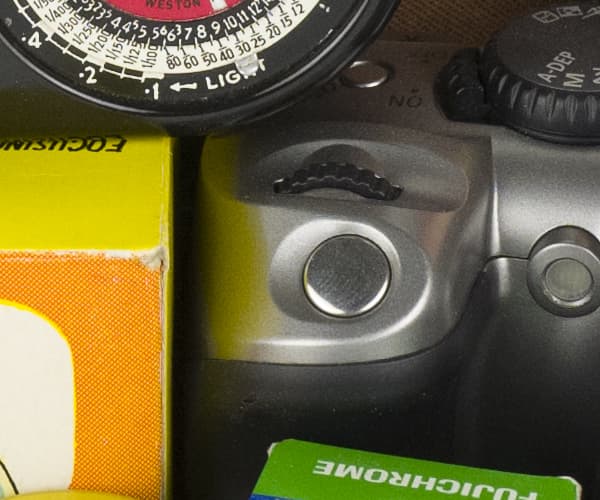
Leica Q noise – ISO 800
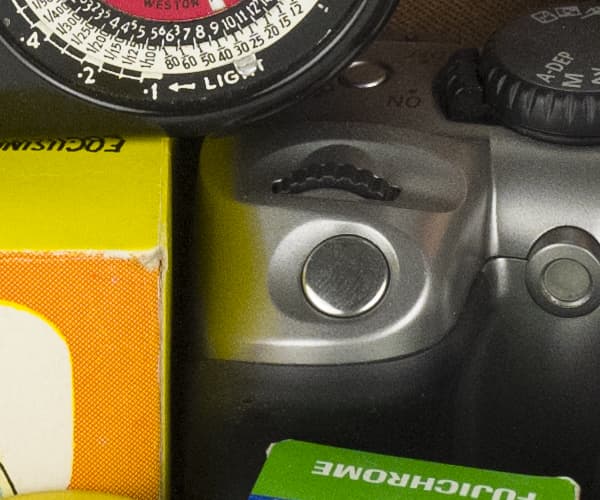
Leica Q noise – ISO 1600
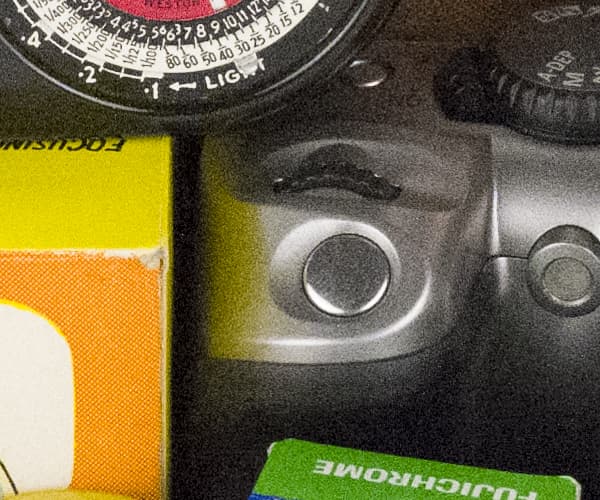
Leica Q noise – ISO 12,500
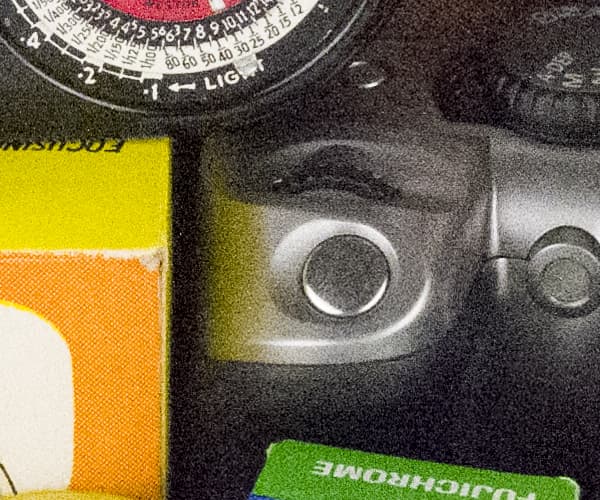
Leica Q noise – ISO 25,000
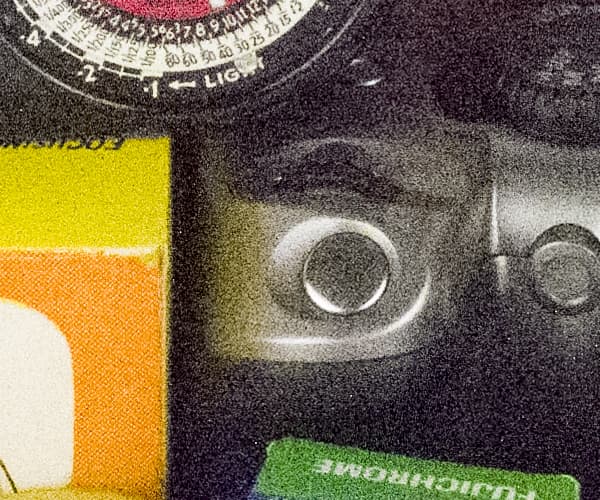
Leica Q noise – ISO 50,000
Verdict
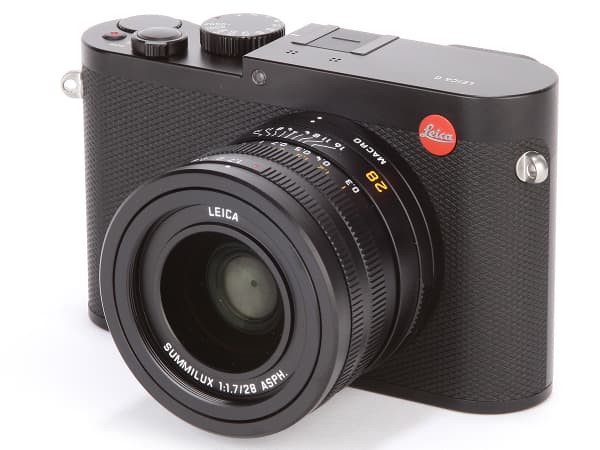
Apart from the Leica M rangefinders, most of Leica’s other digital cameras haven’t quite hit the mark. However, the Leica Q is different. It feels complete, as if Leica has listened to the feedback from photographers and thought about how it could make a digital camera, in keeping with its traditions, that suits the needs of digital photographers. It is worth remembering that Leica’s history has seen it create products that can make complex tasks simple – and that is exactly what the company has done here. The EVF, touchscreen and autofocus may all seem to be at odds with how we perceive Leica, but it is these features that make the camera a real pleasure to use.
As you would expect, the Leica Q doesn’t come cheap. It costs £2,900, but then the Sony Cyber-shot DSC-RX1 is currently listed at £2,599 and it doesn’t have a built-in EVF. The RX1’s optional EVF costs £379, so when that is added to the RX1 the total comes to £2,978, which makes it more expensive than the Q.
While the Leica Q is far from cheap, the actual market value of the camera isn’t horrendous. Given how the camera performs I’m sure it will sell well – and to people who want to use it and not just look at it on a shelf or hang it round their neck like some kind of designer jewellery.
Leica has already said that there may be other versions of the camera in the future, presumably with 35mm or 50mm fixed lenses, but personally I would go the whole hog and bring out an M-mount version. When the viewfinder and focusing are this good, the rangefinder is looking more and more obsolete.


